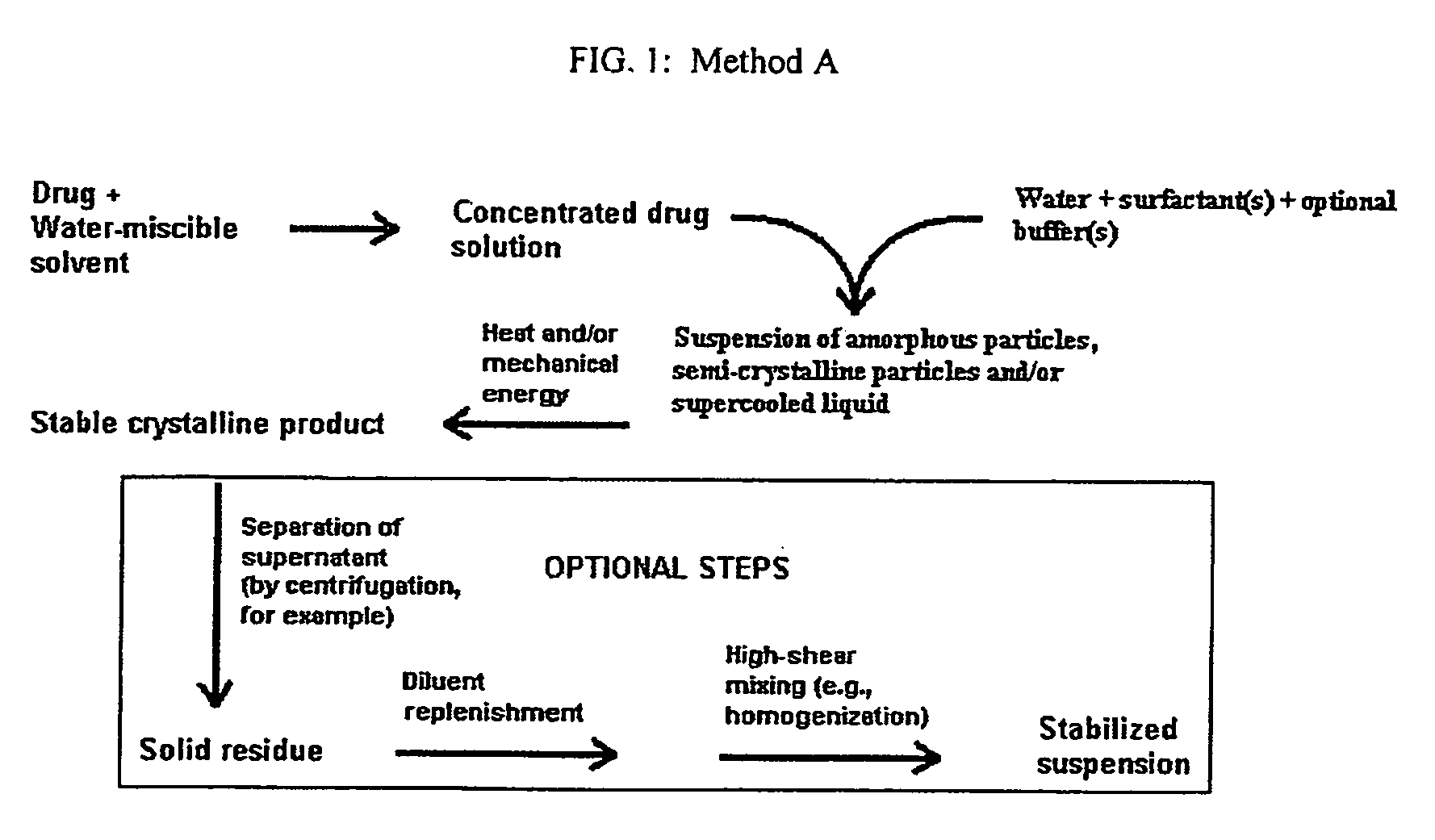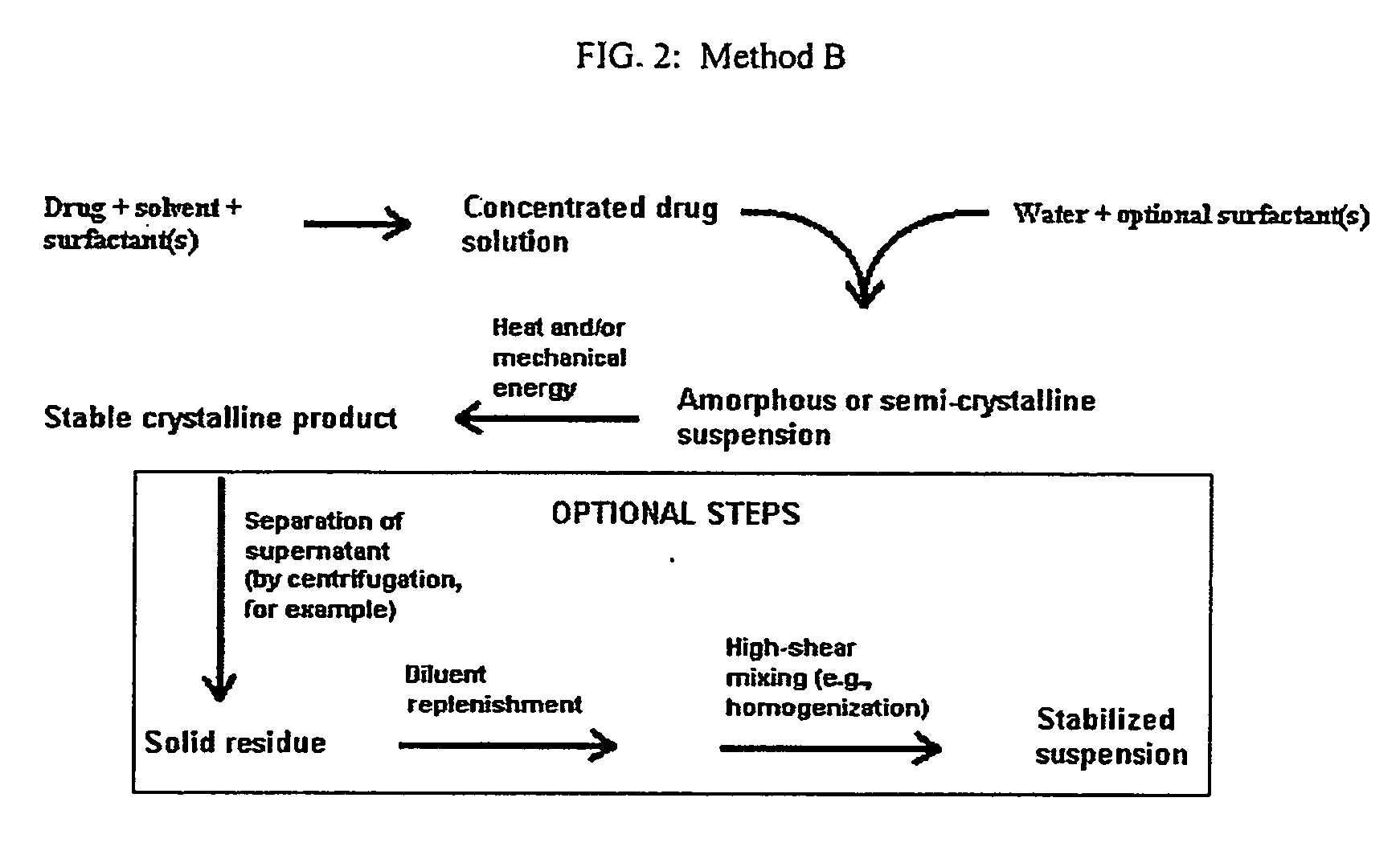Surfactant systems for delivery of organic compounds
a technology of organic compounds and surfactants, applied in the direction of organic active ingredients, pharmaceutical delivery mechanisms, microcapsule preparations, etc., can solve the problems of difficult delivery, many of the poorly soluble or insoluble organic compounds that are useful in therapeutic or diagnostic applications, and many of the poorly soluble or insoluble organic compounds. achieve the effect of preventing the delivery of nanoparticles, poor physiological compatibility, and effective long-term stability
- Summary
- Abstract
- Description
- Claims
- Application Information
AI Technical Summary
Benefits of technology
Problems solved by technology
Method used
Image
Examples
example 1a
Microprecipitation and Homogenization Processes for Making Paclitaxel Particles With mPEG-DSPE / Poloxamer Surfactant System
[0069] Example 1A:A solution of paclitaxel in NMP was precipitated in a surfactant solution containing 0.5% poloxamer 188 and 0.05% mPEG-DSPE (2000) (with 2% glycerin as a tonicity agent), at low temperature (<10° C.). The total suspension volume was 10 mL, with a drug concentration of 1% (w / v). High pressure homogenization was carried out immediately after precipitation, at a pressure of ˜25,000 psi at a temperature of 40° C. After homogenization (20 minutes), particle size of the suspension was examined using light scattering. Mean particle size was 186 nm.
example 1b
[0070] A solution of paclitaxel in NMP was precipitated in a surfactant solution containing 0.5% w / v poloxamer 188 and 0.05% w / v mPEG-DSPE (2000) (with 2% w / v glycerin as a tonicity agent), at low temperature (<10° C.). The total suspension volume was 20 mL, with a drug concentration of 1% (w / v). High pressure homogenization was carried out immediately after precipitation, at a pressure of ˜25,000 psi at a temperature of 40° C. After 30 minutes homogenization, particle size of the suspension was examined using light scattering. Mean particle size was 204 nm.
example 1c
[0071] A solution of paclitaxel in NMP was precipitated in a surfactant solution containing 0.5% poloxamer 188 and 0.05% mPEG-DSPE (2000) (with 2% glycerin as a tonicity agent), at low temperature (<10° C.) . The total suspension volume was 10 mL, with a drug concentration of 1% (w / v). High pressure homogenization was carried out immediately after precipitation, at a pressure of ˜25,000 psi at a temperature of 70° C. After homogenization, particle size of the suspension was examined using light scattering. Mean particle size was 158 nm. About 45% of particles were under 150 nm.
PUM
| Property | Measurement | Unit |
|---|---|---|
| mean particle size | aaaaa | aaaaa |
| mean particle size | aaaaa | aaaaa |
| particle size | aaaaa | aaaaa |
Abstract
Description
Claims
Application Information
 Login to View More
Login to View More - R&D
- Intellectual Property
- Life Sciences
- Materials
- Tech Scout
- Unparalleled Data Quality
- Higher Quality Content
- 60% Fewer Hallucinations
Browse by: Latest US Patents, China's latest patents, Technical Efficacy Thesaurus, Application Domain, Technology Topic, Popular Technical Reports.
© 2025 PatSnap. All rights reserved.Legal|Privacy policy|Modern Slavery Act Transparency Statement|Sitemap|About US| Contact US: help@patsnap.com



